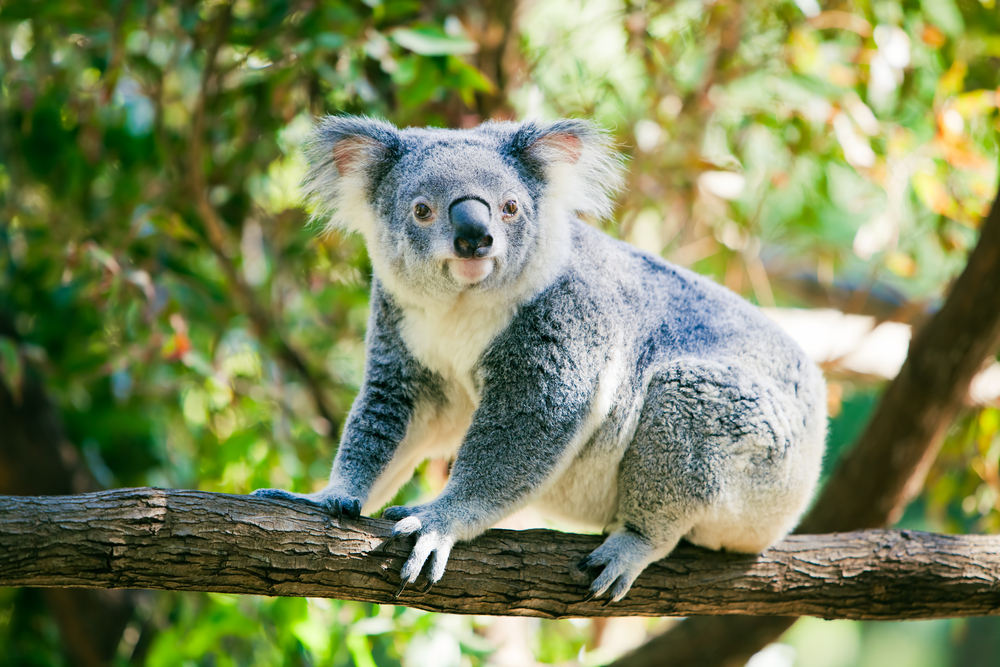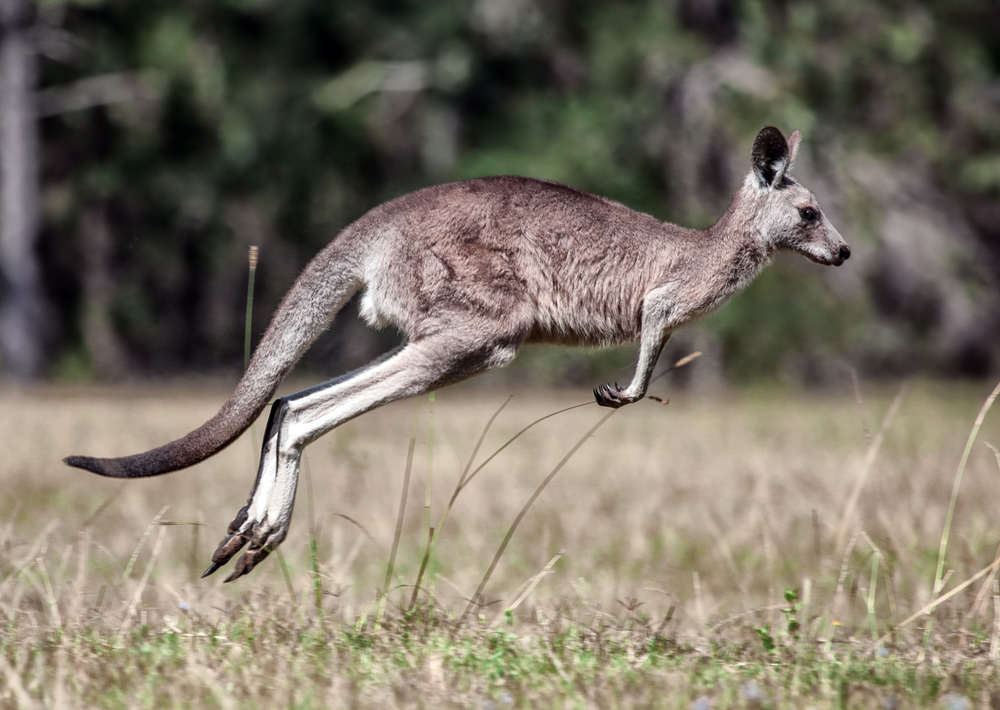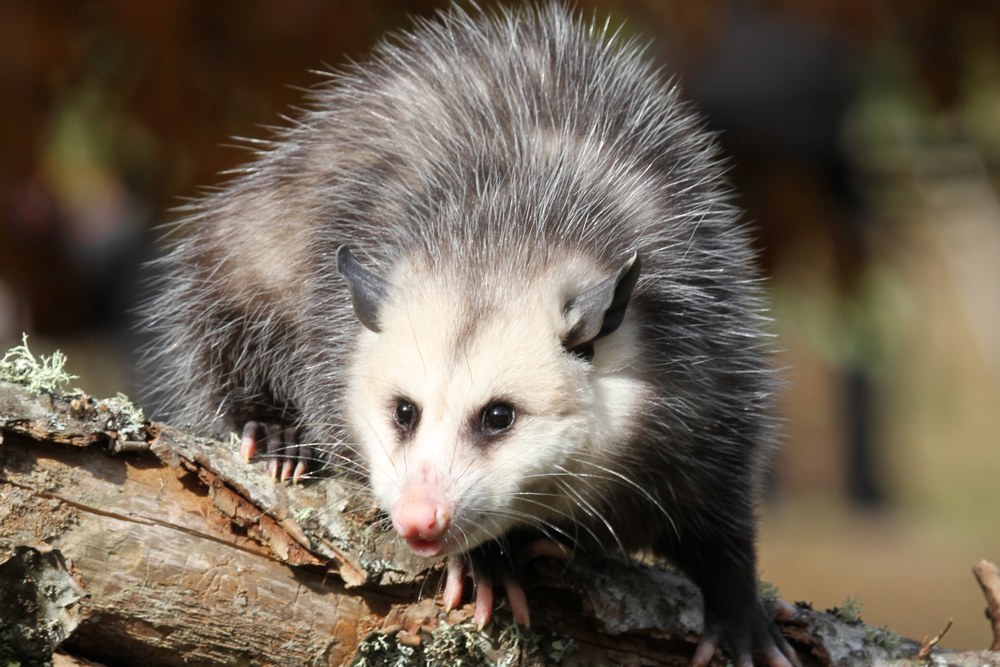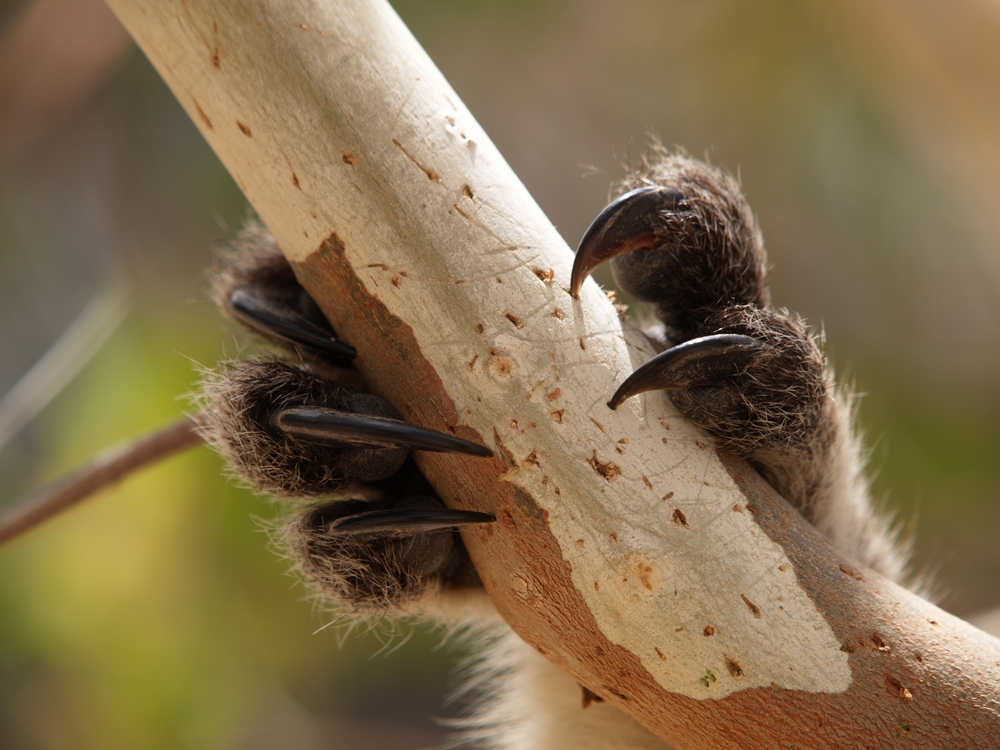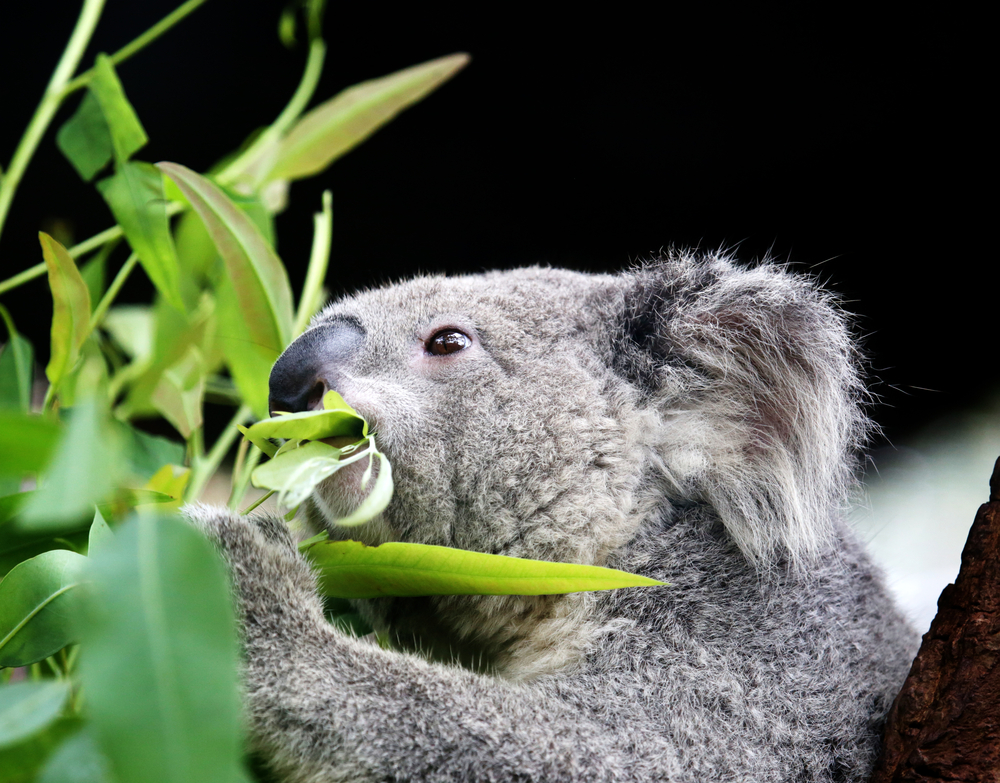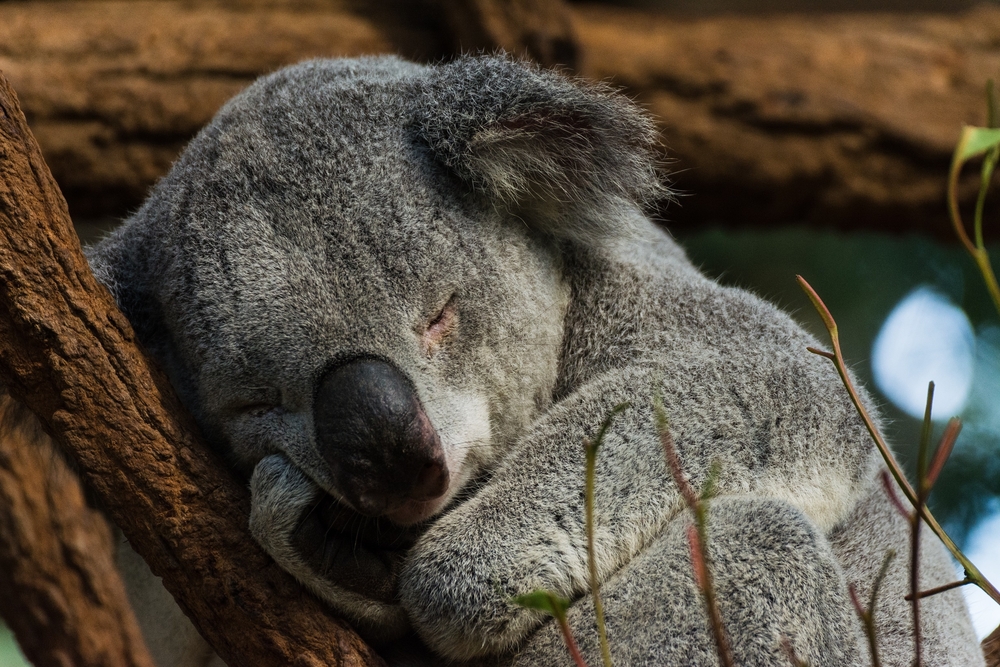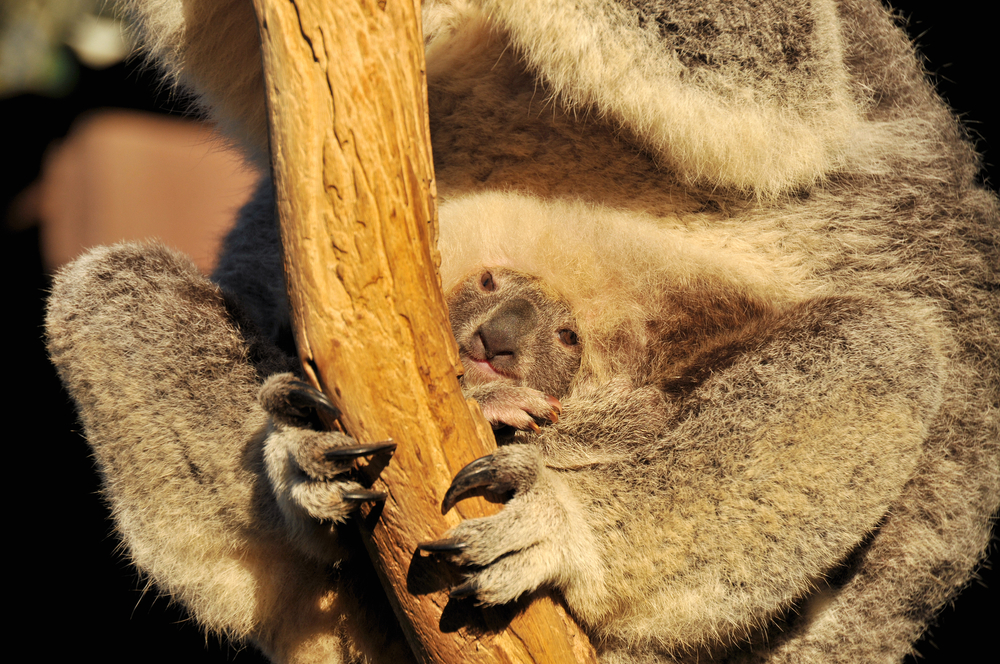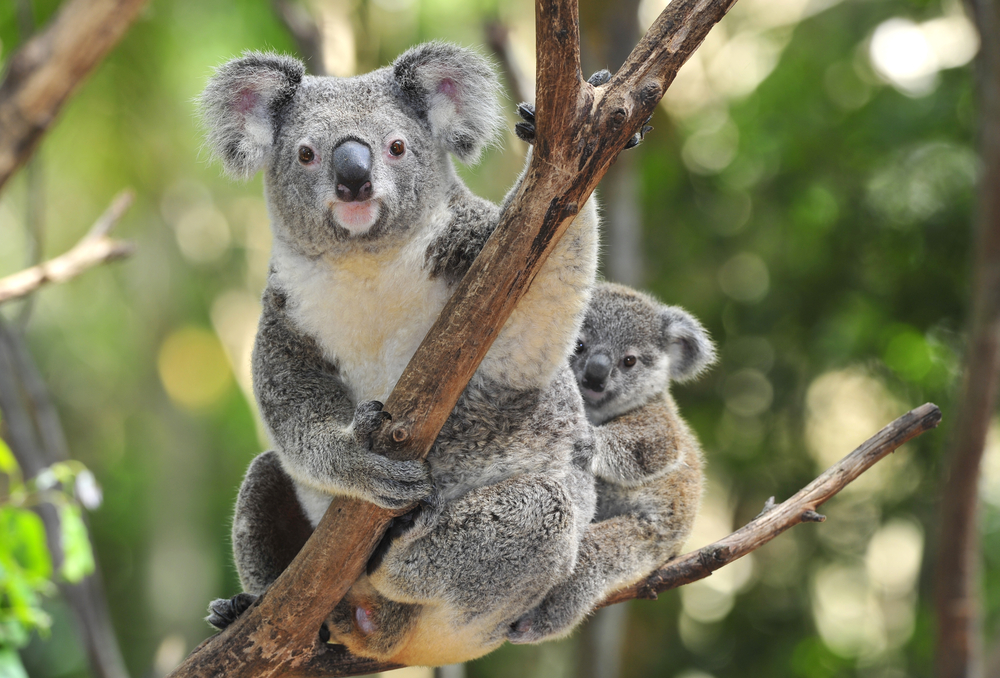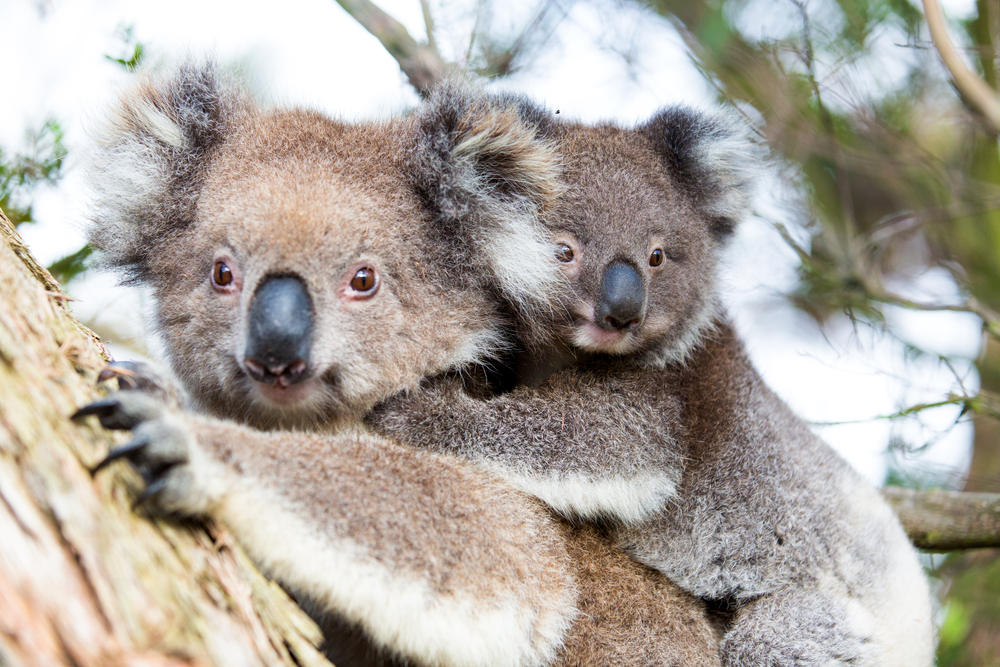About
The Koala, often affectionately referred to as the Koala Bear, is an iconic marsupial native to Australia. Despite its bear-like appearance and common nickname, the Koala is not a bear but a marsupial, a group of mammals known for carrying and nurturing their young in a pouch. Scientifically classified as Phascolarctos cinereus, the Koala belongs to the family Phascolarctidae.
Koalas are recognized worldwide for their distinctive, cuddly appearance characterized by a stout body, large head with round, fluffy ears, and a prominent, spoon-shaped nose. Their fur is typically ash gray to brown in color, with a white chest and inner arms, providing both insulation and camouflage among the eucalyptus trees they inhabit.
Primarily found in the eastern and southern regions of Australia, Koalas live in eucalyptus forests and woodlands where they maintain a herbivorous diet, feeding almost exclusively on the leaves of eucalyptus trees. These leaves are low in nutritional value and toxic to most other animals, but Koalas have adapted a specialized digestive system to detoxify the harmful chemicals and extract the necessary nutrients.
Koalas spend most of their time in trees, leading a largely sedentary and solitary lifestyle, characterized by long periods of sleep. This behavior is a result of their low-energy diet, which requires them to conserve energy. While they have few natural predators, Koalas face significant challenges due to habitat loss, bushfires, disease, and climate change, making conservation efforts crucial for their survival. Their cultural significance and ecological role in the Australian bush make them not only a symbol of Australia’s unique wildlife but also an important species for conservation focus.
Conservation Concerns
Koala populations face significant threats due to habitat loss, fragmentation, disease, and climate change. The clearing of eucalyptus forests for urban development, agriculture, and logging has resulted in the loss of critical habitat for koalas, leading to population declines in many areas.
Additionally, koalas are susceptible to diseases such as chlamydia and koala retrovirus, which can cause reproductive problems, blindness, and immune system suppression. Climate change exacerbates these threats by altering the distribution and abundance of eucalyptus trees and increasing the frequency and severity of extreme weather events.
The International Union for Conservation of Nature (IUCN) Red List currently lists the koalas as vulnerable, with some populations facing a higher risk of extinction. Conservation efforts focus on protecting remaining eucalyptus habitat, establishing wildlife corridors, managing disease outbreaks, and implementing climate change adaptation strategies.
Physical Characteristics
The Koala, commonly but inaccurately referred to as a “Koala Bear,” is a marsupial native to Australia and has a distinctive physical appearance:
Physical Appearance:
- Fur: Koalas have thick, soft fur that varies in color from light gray to brown, providing insulation against both the cold and heat. Their underside is usually white or light gray.
- Face: They have a large, rounded head with a distinctive broad, black, or brown nose. Their large, fluffy ears add to their teddy bear-like appearance.
- Body: Koalas have a stout, somewhat round body with a small, inconspicuous tail.
- Limbs: Their limbs are strong and muscular, with sharp claws that aid in climbing trees. The front and hind limbs are nearly equal in length, helping them grip branches and leaves.
Size and Weight:
- Height: Adult koalas measure about 24 to 34 inches (60 to 85 centimeters) in length.
- Weight: There is a notable size difference between male and female koalas. Males typically weigh between 11 to 32 pounds (5 to 14.5 kilograms), while females are smaller, weighing between 9 to 19 pounds (4 to 8.5 kilograms).
The Koala’s physical characteristics, such as its thick fur, strong climbing limbs, and distinctive nose, are perfectly adapted to its tree-dwelling lifestyle. These features, along with their gentle and sleepy facial expression, contribute to their widespread appeal and status as an iconic symbol of Australian wildlife.
Reproduction
The reproductive cycle of the Koala, an iconic marsupial native to Australia, has distinct characteristics typical of marsupial reproduction:
Breeding Season: Koalas typically have a breeding season that ranges from September to March. However, this can vary depending on the geographical location and environmental conditions.
Gestation Period: After mating, the gestation period in koalas is remarkably short, lasting about 30 to 35 days. This short gestation is characteristic of marsupials, where the young are born at a very early stage of development.
Birth and Litter Size: Koalas usually give birth to a single offspring, known as a joey. It is rare for koalas to have twins, and in the event of multiple births, it is unlikely that more than one joey would survive due to the mother’s limited capacity to care for multiple young.
Development in the Pouch: The newborn joey, blind and hairless at birth, immediately climbs into the mother’s pouch. It attaches itself to one of the teats and remains in the pouch for about six months. During this time, the joey undergoes significant development.
Weaning and Independence: After leaving the pouch, the joey rides on its mother’s back and starts to eat eucalyptus leaves, supplementing its diet with milk. The weaning process is gradual, and the joey becomes fully independent at about 12 months of age.
Sexual Maturity: Female koalas typically reach sexual maturity at about 2 to 3 years of age, while males may mature a bit later, around 3 to 4 years.
The reproductive cycle of the Koala, with its short gestation period and extended parental care, is key to the survival of the young in their arboreal environment. Despite their low reproductive rate, koalas have successfully adapted to their niche in the eucalyptus forests of Australia. However, they face various threats, including habitat loss, which makes their conservation a priority.
Lifespan
The lifespan of the Koala, an iconic Australian marsupial, varies between their existence in the wild and in captivity, influenced by different environmental factors and threats.
Lifespan in the Wild:
- In their natural habitat, koalas typically have a lifespan of about 10 to 13 years. Female koalas generally live longer than males, due to the latter’s more stressful life involving fights for territory and mates.
- Factors influencing their lifespan in the wild include predation (mainly affecting younger koalas), diseases, and environmental stresses such as habitat destruction and climate change.
Lifespan in Captivity:
- Koalas in captivity often have a longer lifespan due to the absence of predators, regular veterinary care, and a consistent food supply. In zoos or animal sanctuaries, they can live up to 15-20 years.
- The controlled environment and medical attention help in managing health issues more effectively, contributing to their increased longevity in captivity.
Major Threats:
- Habitat Loss: The most significant threat to koalas is the loss and fragmentation of their natural habitat due to urban development, agriculture, and forestry activities.
- Disease: Koalas are susceptible to various diseases, the most impactful being Chlamydia, which can cause blindness, infertility, and even death.
- Climate Change: Rising temperatures, changes in weather patterns, and increased frequency of bushfires associated with climate change pose significant risks to their habitat and food sources.
- Vehicle Collisions and Dog Attacks: In areas where their habitat overlaps with human populations, koalas face dangers from road traffic and domestic dogs.
Conservation efforts for koalas are focused on protecting and restoring their natural habitat, disease management, and mitigating risks from human interaction. Understanding these threats is crucial for ensuring the survival of this unique and beloved marsupial.
Eating Habits
The Koala, often affectionately referred to as the “Koala Bear,” has specialized eating habits that are uniquely adapted to its environment:
Diet:
- Eucalyptus Leaves: The koala’s diet consists almost exclusively of eucalyptus leaves. Koalas are highly selective, eating leaves from only a few of the over 700 eucalyptus species. They prefer leaves that are high in protein and low in lignin and phenolic compounds.
- Nutritional Content: Eucalyptus leaves are not highly nutritious and are tough and fibrous, making them a challenging diet for most animals. However, koalas have a specialized digestive system with a long cecum that allows them to break down the leaves and detoxify the harmful chemicals.
- Water Intake: Koalas derive most of the moisture they need from eucalyptus leaves, rarely needing to drink water.
Foraging Behavior:
- Koalas spend most of their time in eucalyptus trees, where they select, pluck, and eat the leaves. They have a slow metabolic rate, which is an adaptation to their low-energy diet.
- A koala eats about 1 to 1.5 pounds (500 to 700 grams) of leaves per day, spending several hours chewing to grind the leaves into a fine paste before swallowing.
Gathering Food:
- Koalas have sharp claws and strong limbs that enable them to climb efficiently and maneuver through the branches to access the best leaves.
- They are mostly solitary animals, and each koala has its home range with a few favorite eucalyptus trees that it visits regularly.
The koala’s diet and eating habits are crucial adaptations to its environment. The ability to process and detoxify eucalyptus leaves, a food source avoided by most other animals, illustrates the koala’s specialized ecological niche. However, their reliance on eucalyptus trees makes them vulnerable to habitat loss and changes in their environment.
Uniqueness
The Koala, often colloquially referred to as the “Koala Bear,” is a unique marsupial native to Australia, distinguished by several distinctive traits:
- Diet Specialization: Koalas have a highly specialized diet, feeding almost exclusively on eucalyptus leaves. They possess a selective palate, choosing leaves based on nutritional content and toxin levels.
- Digestive Adaptation: Their digestive system is uniquely adapted to detoxify the poisonous chemicals in eucalyptus leaves. A long cecum helps in breaking down the tough fibers and extracting the limited nutrients.
- Arboreal Lifestyle: Koalas are arboreal, spending most of their lives in eucalyptus trees. Their physical adaptations, such as sharp claws and padded, strong limbs, are perfect for a tree-dwelling lifestyle.
- Reproductive Behavior: As marsupials, koalas give birth to underdeveloped young that continue to grow in the mother’s pouch. The young, called a joey, spends up to six months in the pouch before transitioning to riding on the mother’s back.
- Vocalizations: Despite their generally quiet demeanor, koalas can produce loud, deep growls and bellows, especially during the breeding season.
- Sleep Patterns: Koalas are known for their extensive sleeping habits, necessitated by their low-energy diet. They can sleep up to 18-20 hours a day.
- Conservation Status: Koalas are an iconic symbol of Australian wildlife but face threats from habitat loss, climate change, diseases, and bushfires, making their conservation a critical concern.
- Cultural Significance: Koalas hold a special place in Australian culture and are an important draw for ecotourism, symbolizing the unique natural heritage of the continent.
These unique characteristics not only distinguish the Koala in the animal kingdom but also underscore its ecological and cultural importance. Conservation efforts are crucial to protect this beloved marsupial and its habitat
Sources
- Britannica, Koala, https://www.britannica.com/animal/koala, retrieved January 2024.
- Burnie, David & Wilson, Don, Animal, Smithsonian Institute, Washington DC.
- Clutton-Brock, Juliet and Wilson, Don, Mammals, Smithsonian Handbooks, New York, NY.
- Hickman et al, Integrated Principle of Zoology, McGraw Hill, Boston.






























































